
How furniture can help contribute towards the WELL Building Standard
As workplace wellbeing and sustainability becomes increasingly relevant, the WELL Building Standard has become the leading measure of success. We look at how furniture can play a part in achieving this popular certification.
- Wellbeing
- Sustainability
- HÅG
- RH
- OFFECCT
- Advice & Guidance
- Profim
- Sustainability Certificates
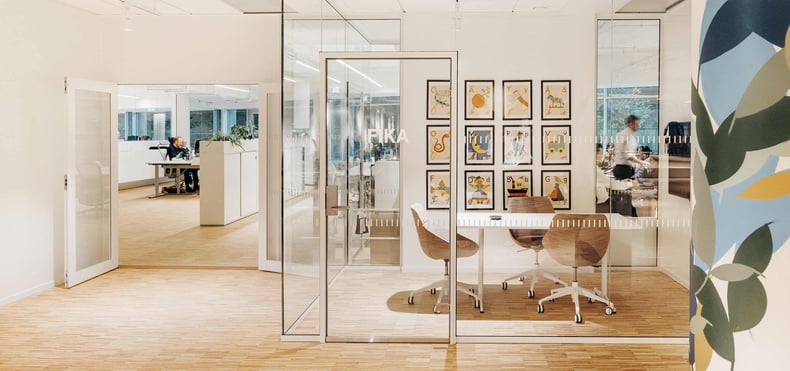
The WELL Building Standard is one of the leading tools for advancing health and wellbeing in buildings globally. Developed by the International WELL Building InstituteTM (“IWBITM”), its application is spreading not only around the world but to different types of properties, helping architects, designers, and property owners to create and inhabit safe and sustainable buildings that also promote physical and mental health and wellbeing.
The various levels of certification, from Bronze to Platinum, demand ever-increasing quality of elements such as air, water, light, movement, sound, and materials, to name a few. Every aspect of the building is considered, from the materials used to construct the walls, right down to the furniture provided for the users.
So when it comes to the furniture, what aspects of the WELL Certification are applicable?
And what should architects, designers, and property owners look out for when selecting furniture to help build towards being WELL Certified?
We look at some of the most important concepts and features that can be positively affected by the furniture you choose.
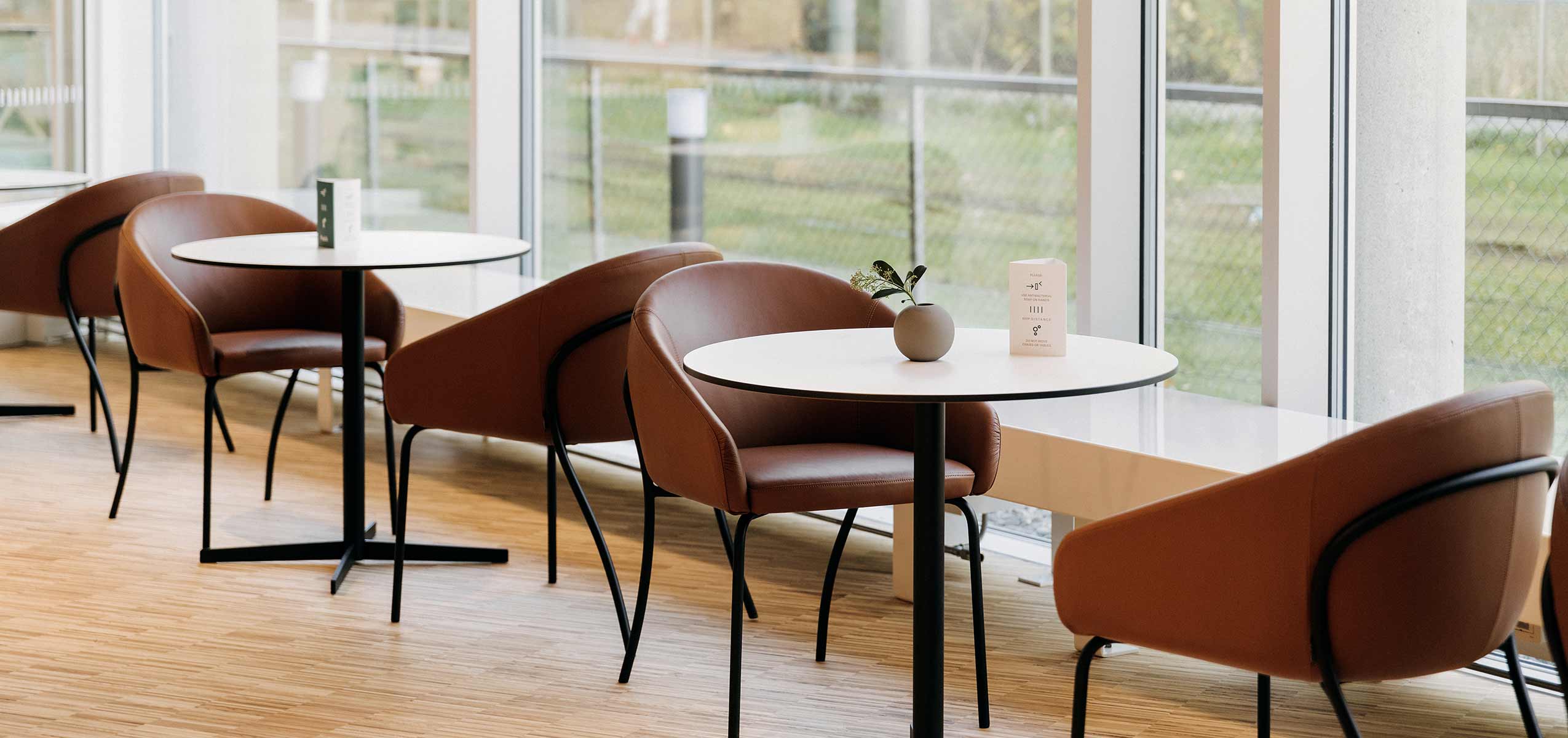
Movement
Movement is one of the 11 key concepts that are examined in WELL, which evaluates the environment's ability to “promote movement, physical activity, and active living and discourage sedentary behaviours through environmental design strategies, programs, and policies.”
Applicable features (criteria examined within the concept)
V02 Visual & Physical Ergonomics – Providing basic ergonomic workstation furnishings for desk- and standing-based workstations and education about workplace risk factors, signs and symptoms of discomfort, ergonomic policies, and available furnishings.
V07 Active Furnishings – Providing occupants access to traditional sit-stand desks and active workstations such as a treadmill or cycle desks.
V10 Enhanced Ergonomics - Collaborate with a qualified professional to audit the ergonomic conditions of the space and implement changes or recommendations through a qualified professional.
What to look out for
When selecting furniture that can contribute towards satisfying this concept, it’s all about ergonomics, movement, reducing sedentary behaviour wherever possible, and reducing the effects of sedentary behaviour when people are seated.
The key here is to choose designs that allow movement and provide a solid ergonomic base from which occupants can work from. This means chairs with strong human factors consideration, (V02) as well as desks that allow people to change posture from sitting to standing throughout the day (V07). By bringing in an expert to ensure your workspace provides this support (V10) is also commended.
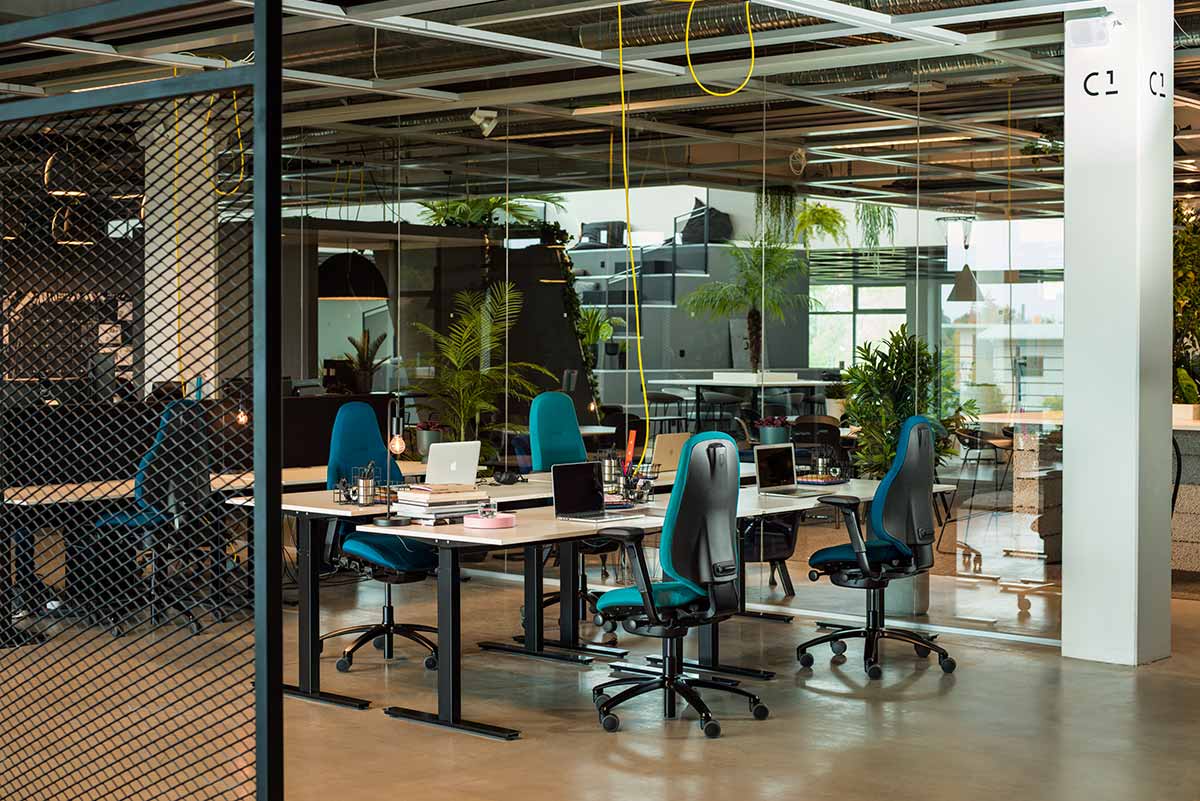
The RH Mereo follows even your smallest movements to always keep you active and provide support. This in turn stimulates blood circulation and facilitates breathing. Our unique Tvedt cushion in the upper backrest provides a gentle push between shoulder blades, to help you sit straight and keep an open posture.
Featured: RH Mereo
.jpg)
The trademark of Flokk brand HÅG is the HÅG In Balance® mechanism, which promotes effortless movement and continual posture changes, helping promote a more healthy sitting experience intuitively, without causing you to lose focus.
Featured: HÅG Capisco
Materials
This concept aims to reduce human exposure to hazardous materials. Between 2000 and 2010 the global chemical output grew by 54%, and whilst many of these are used in construction, consumer goods such as furniture can also contain a variety of toxic chemicals, that are released throughout their lifespan into the environments that they are placed. Many of these features below address this issue and examine the output of chemicals and the material composition of products within the environment.
Applicable Features
X08 Hazardous Material Reduction - The restriction of heavy metals in various building materials and products, including furniture and furnishings and electrical components.
X10 Volatile Compound Reduction - The restriction of hazardous VOC and SVOC compounds, halogenated flame retardants (HFRs), urea-formaldehyde, and select phthalates commonly used in building materials and products.
X11 Long-term Emission Control - Testing and adherence to emission thresholds for newly purchased furniture and furnishings, flooring, and insulation.
X13 Enhanced Material Precaution - Screening and labeling of products in accordance with programs that restrict the use of hazardous ingredient contents in materials and products.
X14 Material Transparency - The compilation and availability of product descriptions, with ingredients evaluated and disclosed down to 1,000 ppm, through transparency labels.
What to look out for
There are several well-established certificates applied within the furniture industry that can easily help identify suitable furniture. Cradle to Cradle Certified® products indicate a strong commitment to circular economy use of approved materials (X13), whilst those that are GREENGUARD Gold Certified meet strict VOC requirements (X10, X11). Products that have an EPD (Environmental Product Declaration) provide a heavily detailed material breakdown, which can show exactly what materials have been used in the entire product process which may have a positive effect on X08 & X14.
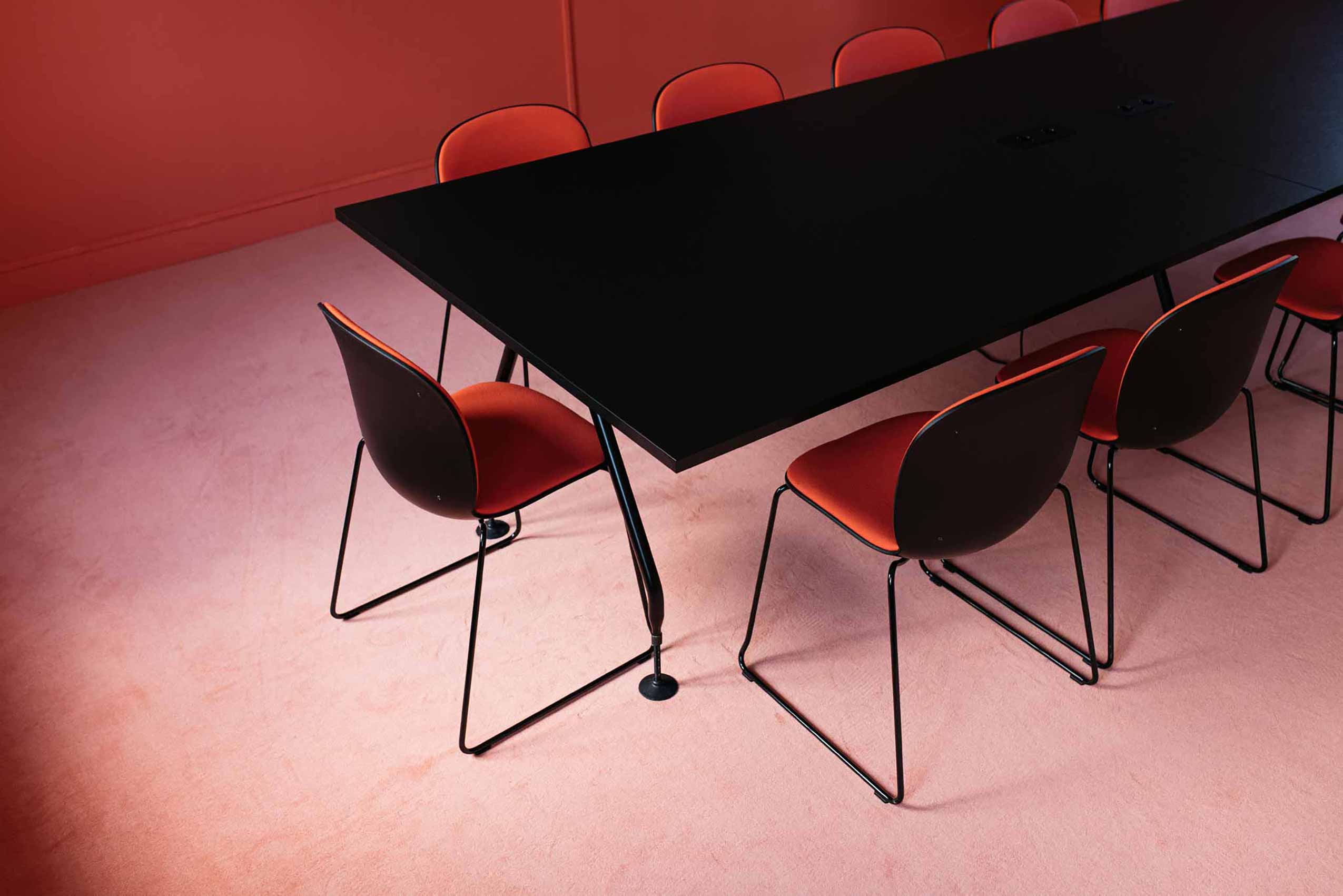
Flokk is proud to offer 25 product families that are GREENGUARD Gold certified, including every new chair produced by HÅG, RH & RBM, as well as the BMA Axia. Certified products greatly reduce the impact of VOCs on indoor air quality.
Featured: RBM Noor Sledgebase
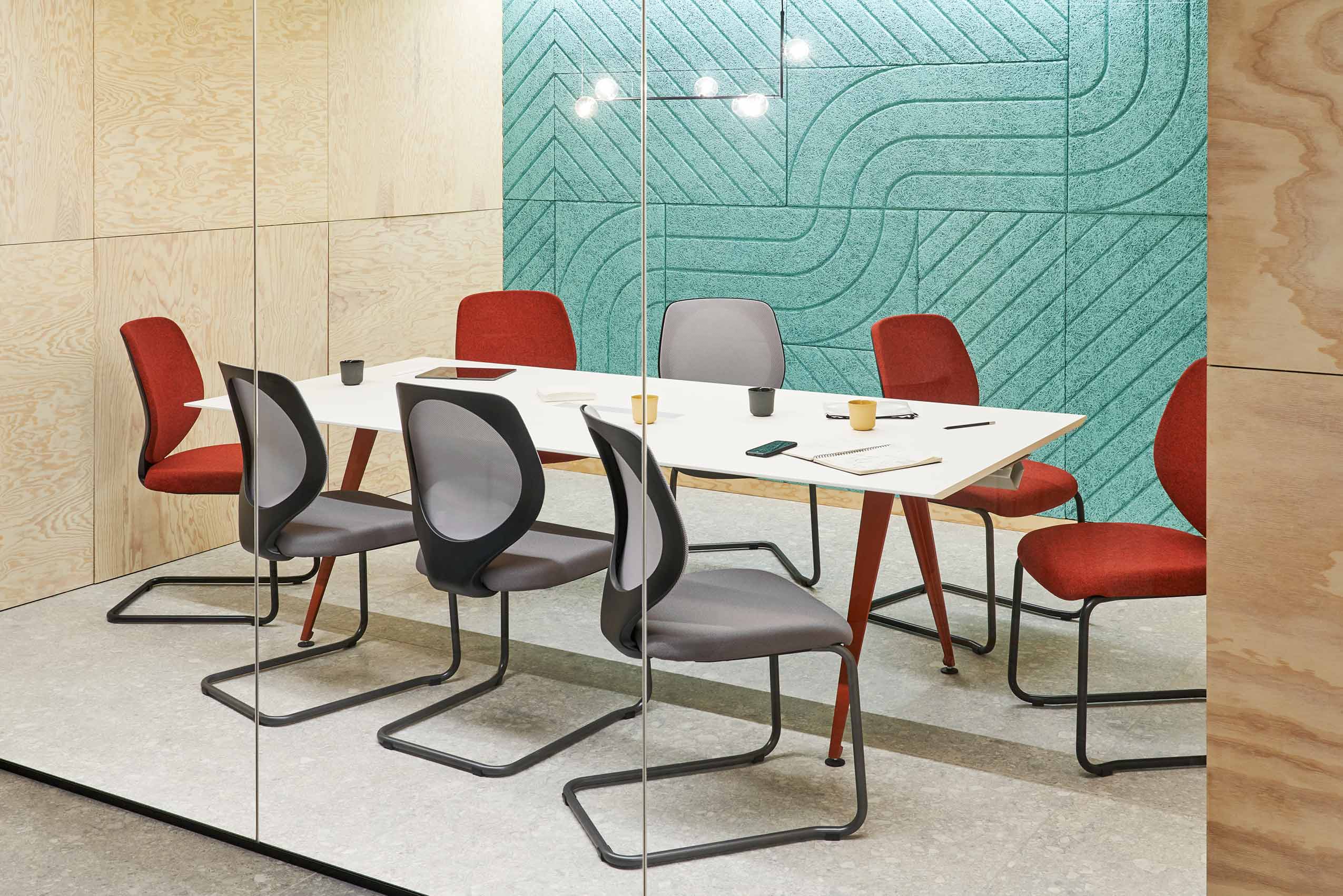
Since 2010 Flokk brand Giroflex has adopted the Cradle to Cradle Certified® approach, with all designs certified.
Featured: giroflex 353
Sound
One of the most cited disturbances to productivity and wellbeing in any space is unwanted noise. This concept aims to “bolster occupant health and well-being through the identification and mitigation of acoustical comfort parameters that shape occupant experiences in the built environment.” Whilst many of these features relate to the design and construction of the space, furniture can also play a key role in managing acoustics.
Applicable Features
S04 Sound Absorption - Steps be taken to address acoustical comfort by assigning requirements for surface finishes and reverberation time depending on the room functionality.
S05 Sound Masking - Requires that a dedicated sound masking system is utilized as a means of suppressing speech from other occupants or other distracting sounds by increasing the background noise level evenly throughout a given area.
What to look out for
These issues are often very prevalent in open-plan offices, so the use of acoustic furniture has steadily been on the rise. There are many products out there such as acoustic panels, dividers, and absorption furniture which can manage noise levels and reduce distractions, whilst also working towards creating distinct environments for different tasks, without the need for building solid walls.
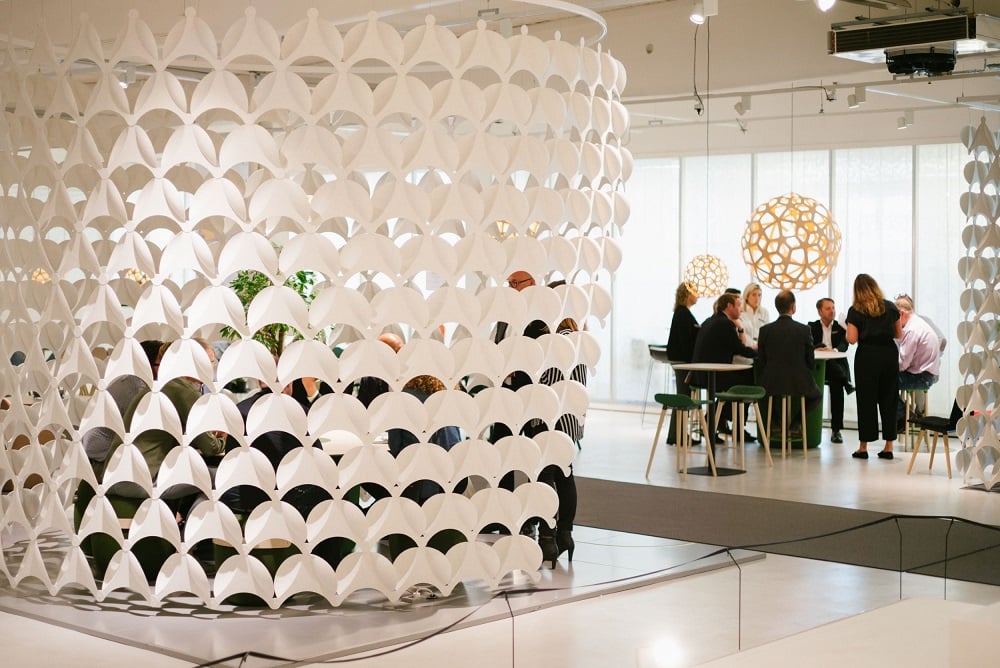
Flokk brand Offecct has a wide variety of acoustic solutions, both free-hanging and wall-fixed, allowing versatile and dynamic sound absorption and masking.
Featured: OFFECCT Membrane acoustic room divider by David Trubridge
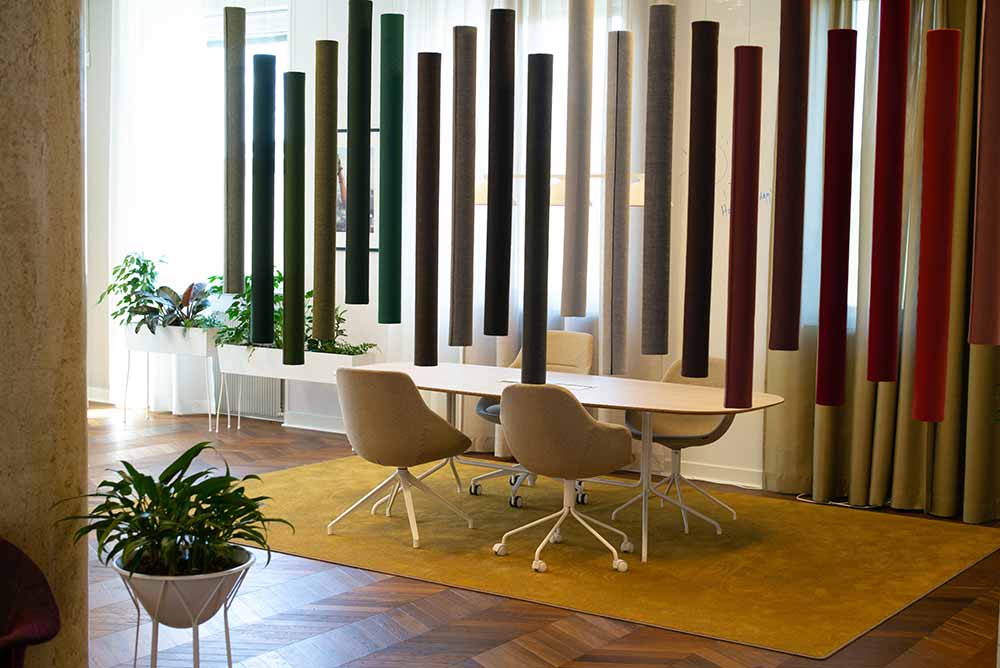
Featured: OFFECCT Soundsticks by Andrea Ruggiero
Conclusion
It’s important to remember that the IWBITM does not review or certify furniture products specifically, only the buildings they inhabit, so it's not about looking for WELL-certified items, but rather identifying, as indicated above, the key concepts and features they can positively influence. Even if you aren’t working to achieve WELL certification, following these guidelines will still help to contribute to a healthier, happier working environment.
“What I like about the WELL building standard is that it’s really an investment in the people who are using the building.” Says Lauren Thompson, WELL AP, Senior A&D Furniture Consultant, who continues; “We now spend 90% of our time indoors so it’s important to recognize how the design and specification of a space can affect both our physical and mental wellbeing. The WELL building standard creates a health-focused environment with a human-centered approach.”
Want to find out more about how Flokk products can help you achieve WELL Certification?
Get in touch with your local team today who will be happy to discuss our complete range of solutions
This might also interest you
Improving ergonomics at work: practical guidance for companies
Ergonomist Rebecka Ullholm shares what most companies get wrong about...
HÅG Tion mesh – now available
Flokk is proud to introduce a new addition to the HÅG Tion family - HÅG...
OFFECCT Circulus wins Red Dot: Best of the Best Design Award 2025
Offecct Circulus, designed by Mario Ferrarini, has been awarded the...